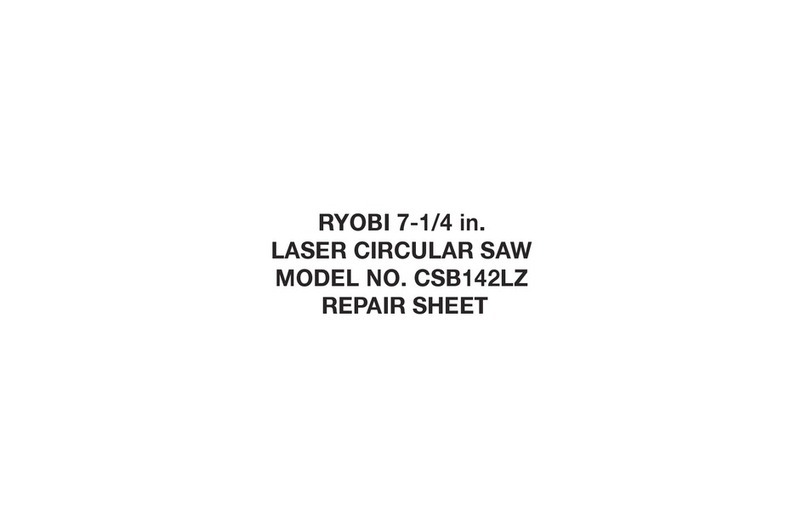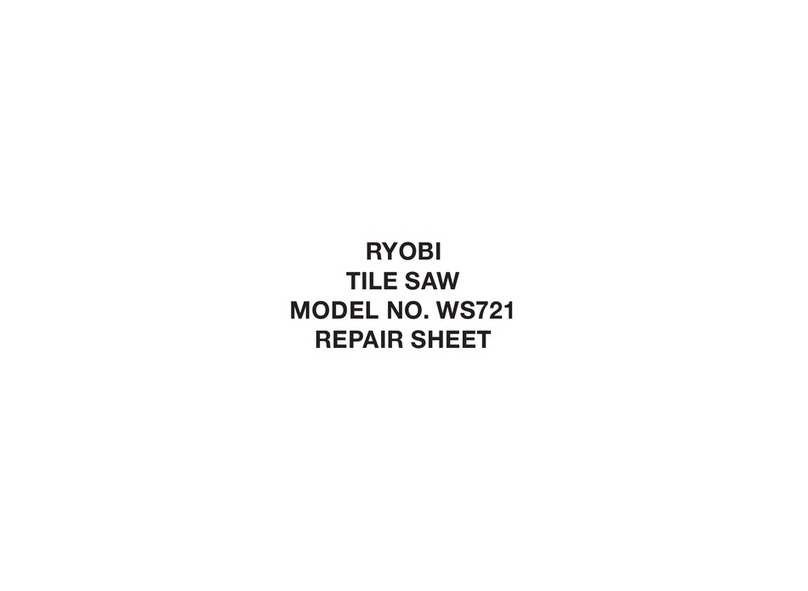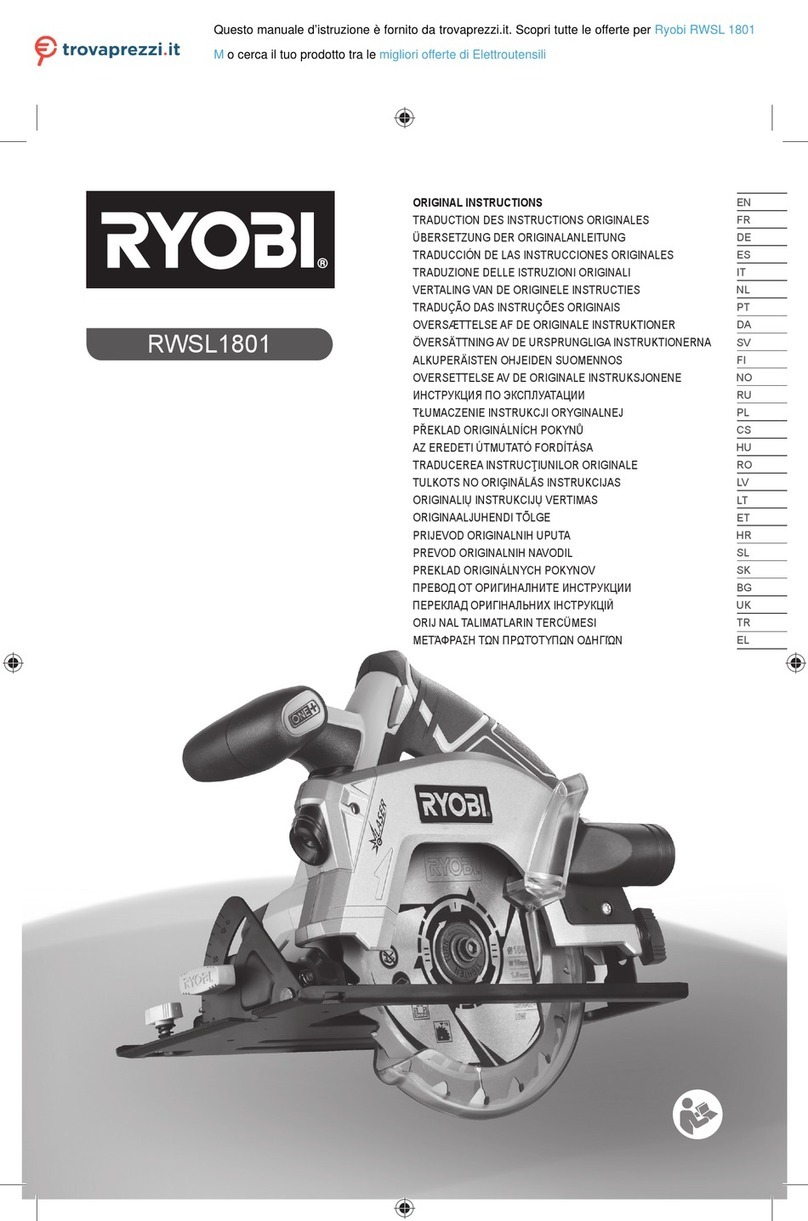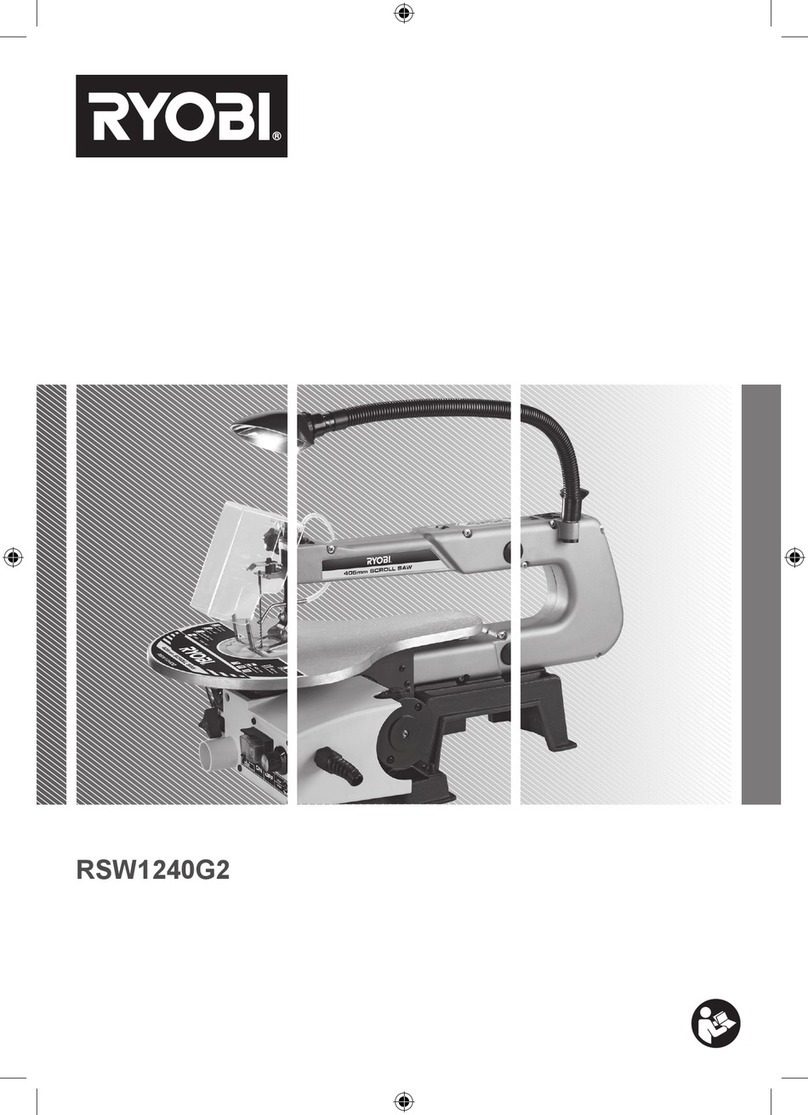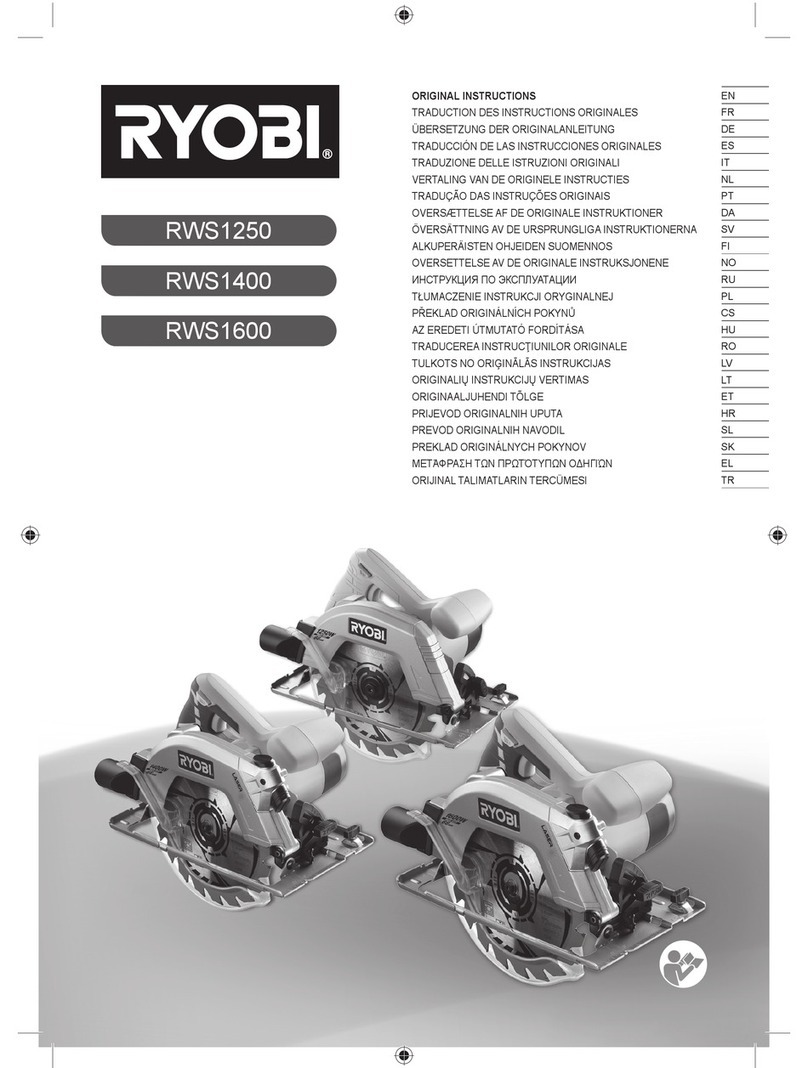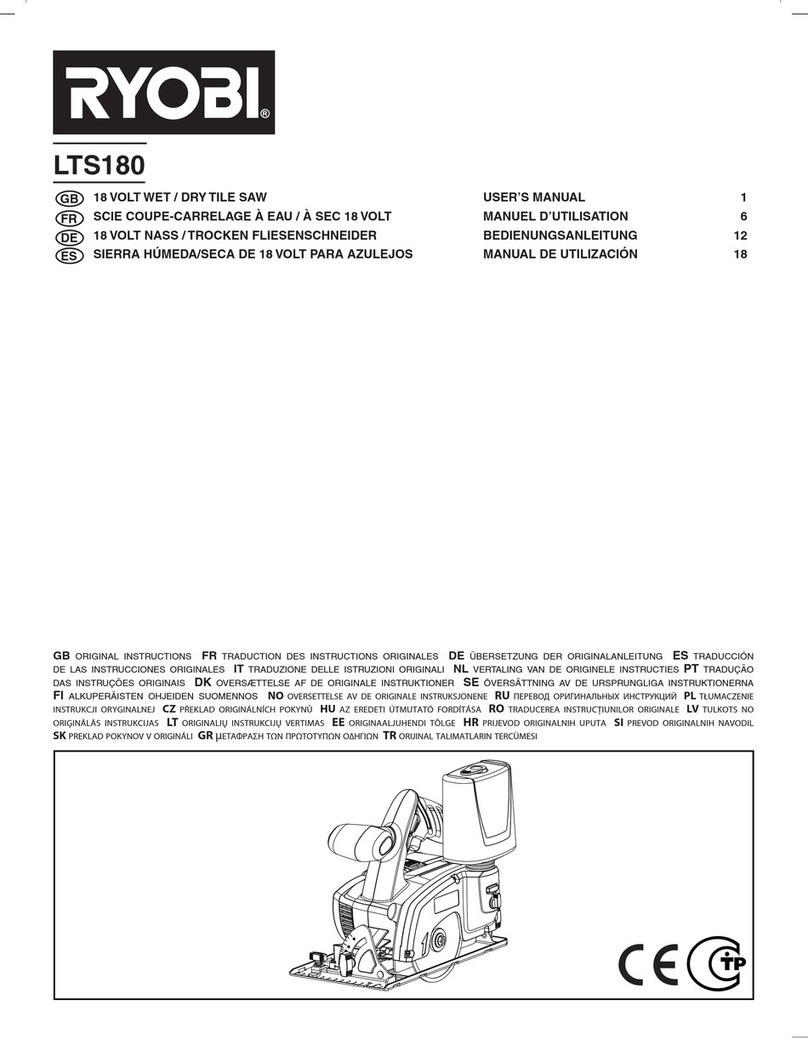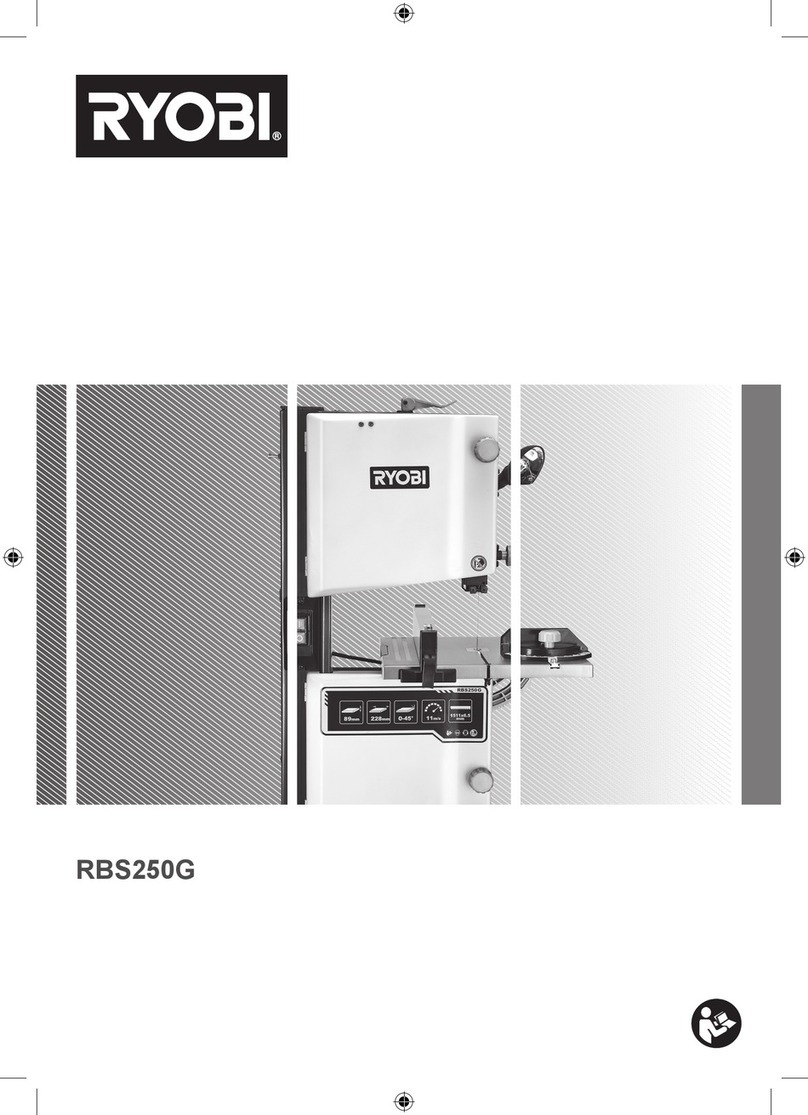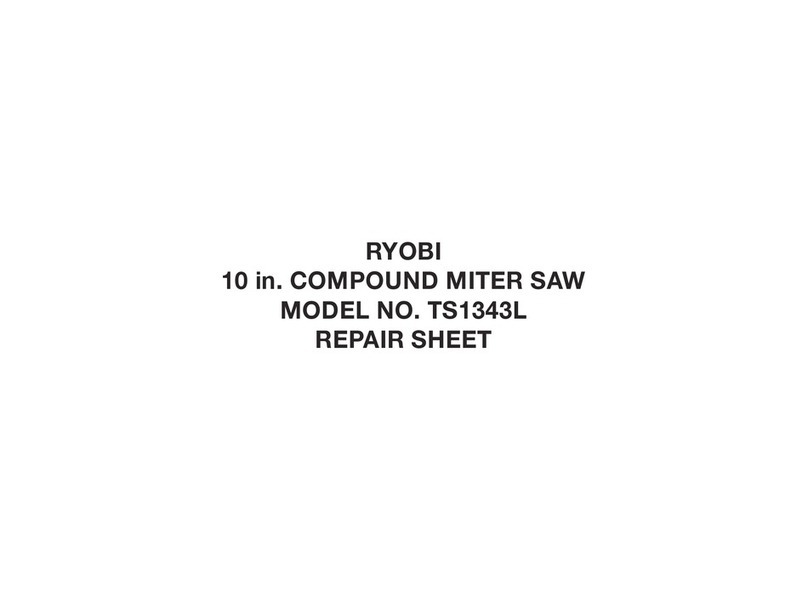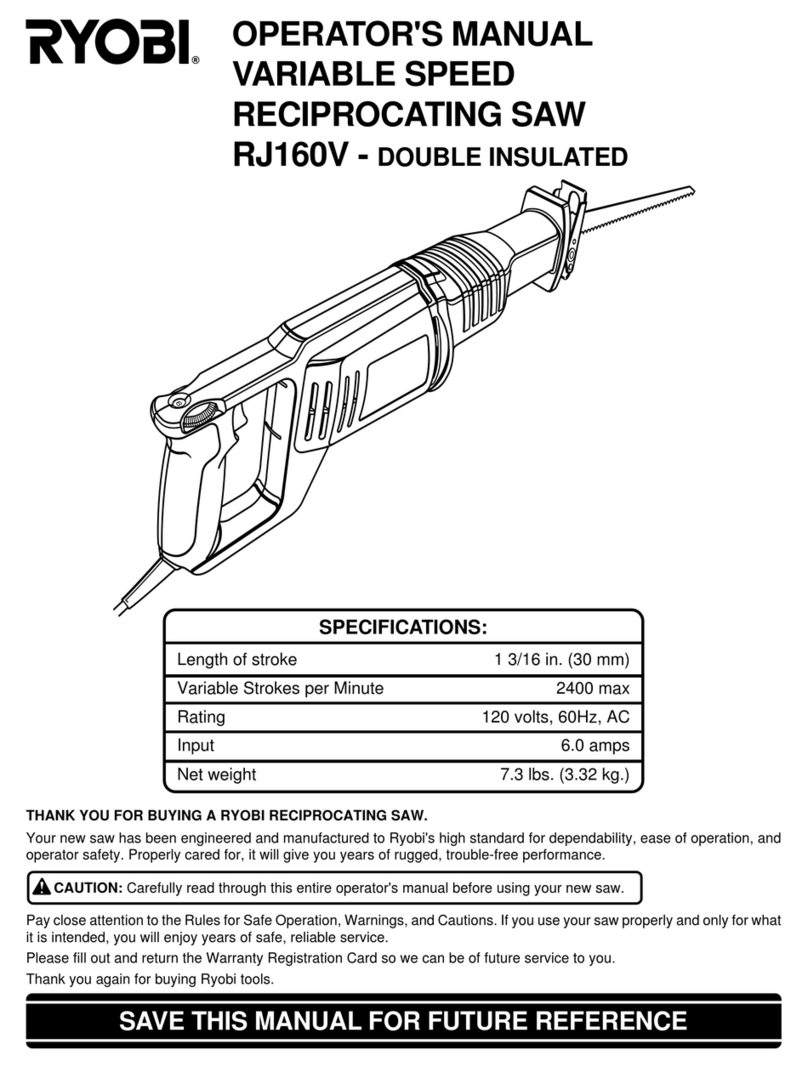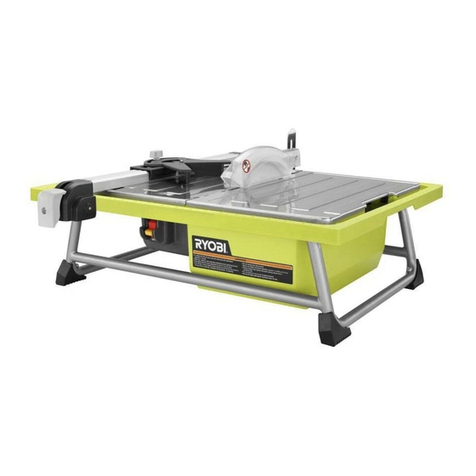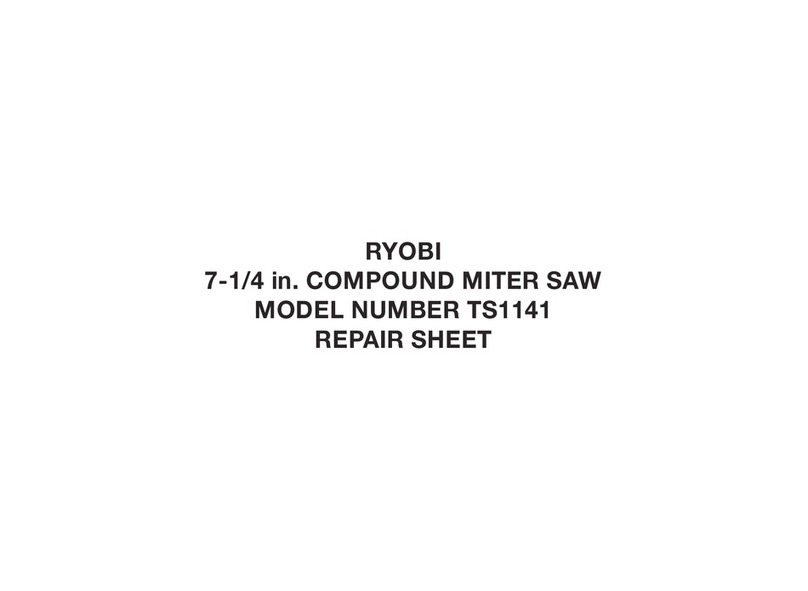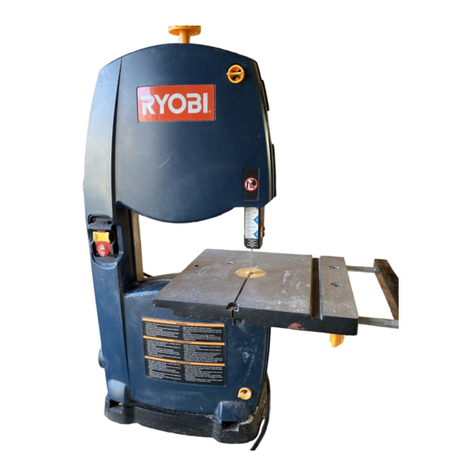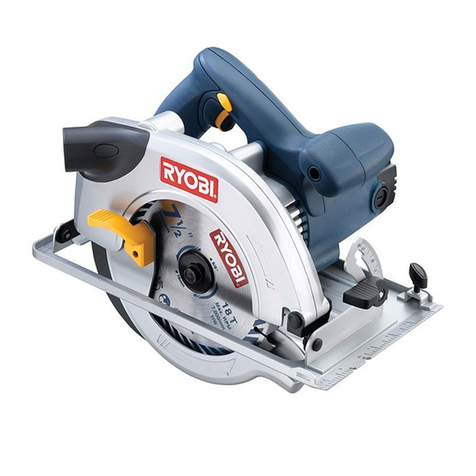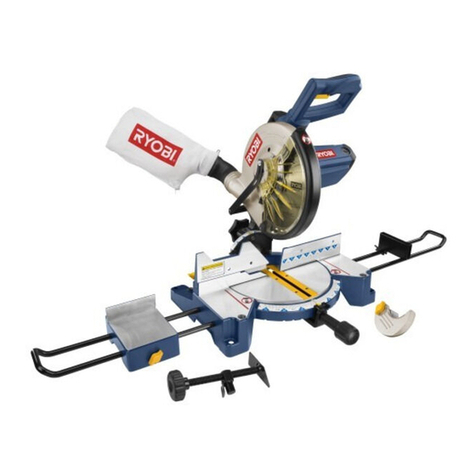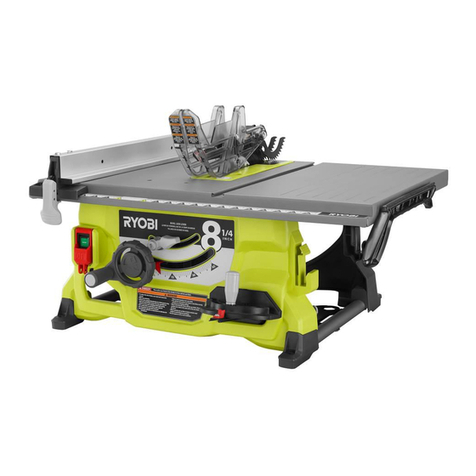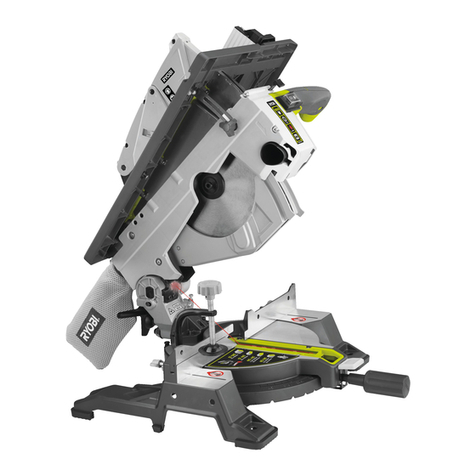Page 2
RULES FOR SAFE OPERATION
The purpose of safety rules is to attract your attention to
possible dangers. The safety symbols and the explanations
with them, require your careful attention and
understanding. The safety warnings do not by themselves
eliminate any danger. The instruction or warnings they give
are not substitutes for proper accident prevention measures.
SAFETY ALERT SYMBOL. Indicates caution or
warning. May be used in conjunction with other
symbols or pictures.
WARNING: Failure to obey a safety warning can
result in serious injury to yourself or to others.
Always follow the safety precautions to reduce
the risk of fire, electric shock and personal injury.
WARNING: Do not attempt to operate this tool
until you have read thoroughly and understood
completely, safety rules, etc. contained in this
manual. Failure to comply can result in accidents
involving fire, electric shock or serious personal
injury. Save owners manual and review
frequently for continuing safe operation and
instructing others who may use this tool.
The operation of any tool can result in
foreign objects being thrown into your
eyes, which can result in severe eye
damage. Before beginning power tool
operation, always wear safety goggles
or safety glasses with side shields and
a full face shield when needed. We recommend Wide
Vision Safety Mask for use over eyeglasses or standard
safety glasses with side shields.
1. KNOW YOUR POWER TOOL. Read owners manual
carefully. Learn its applications and limitations as well as
the specific potential hazards related to this tool.
2. GUARD AGAINST ELECTRICAL SHOCK BY
PREVENTING BODY CONTACT WITH GROUNDED
SURFACES. For example, pipes, radiators, ranges,
refrigerator enclosures.
3. KEEP WORK AREA CLEAN. Cluttered areas and
benches invite accidents.
4. AVOID DANGEROUS ENVIRONMENT. Don't use
power tools in damp or wet locations or expose to rain.
Keep work area well lit.
5. KEEP CHILDREN AND VISITORS AWAY. Visitors should
wear safety glasses and be kept a safe distance from work
area. Do not let visitors contact tool or extension cord.
6. STORE IDLE TOOLS. When not in use, tools should be
stored in a dry and high or locked-up place, out of reach
of children.
7. DON'T FORCE TOOL. It will do the job better and safer
at the rate at which it was designed.
8. USE RIGHT TOOL. Don't force small tool or attachment
to do the job of a heavy duty tool. Don't use tool for
purpose not intended.
9. DRESS PROPERLY. Do not wear loose clothing or
jewellery. They can be caught in moving parts. Rubber
gloves and non-skid footwear are recommended when
working outdoors. Also wear protective hair covering to
contain long hair.
10. ALWAYS WEAR SAFETY GLASSES. Everyday
eyeglasses have only impact resistant lenses, they are
not safety glasses.
11. PROTECT YOUR LUNGS. Wear a dust mask if
operation is dusty.
12. PROTECT YOUR HEARING. Wear hearing protection
during extended periods of operation.
13. DON'T OVERREACH. Keep proper footing and balance
at all times. Do not use tool on a ladder or unstable
support. Secure tools when working at elevated levels.
14. MAINTAIN TOOLS WITH CARE. Keep tools sharp and
clean for better and safer performance. Follow
instructions for lubricating and changing accessories.
15. REMOVE ADJUSTING KEYS AND WRENCHES. Form a
habit of checking to see that keys and adjusting
wrenches are removed from tool before turning it on.
16. NEVER USE IN AN EXPLOSIVE ATMOSPHERE.
Normal sparking of the motor could ignite fumes.
17. KEEP HANDLES DRY, CLEAN AND FREE FROM OIL
AND GREASE. Always use a clean cloth when
cleaning. Never use brake fluids, gasoline, petroleum
based products, or any strong solvents to clean your
tool.
18. STAY ALERT AND EXERCISE CONTROL. Watch
what you are doing and use common sense. Do not
operate tool when you are tired. Do not rush.
19. CHECK DAMAGED PARTS. Before further use of the
tool, a guard or any other part that is damaged should
be carefully checked to determine that it will operate
properly and perform its intended function. Check for
alignment of moving parts, binding of moving parts,
breakage of parts, mounting and any other conditions
that may affect its operation. A guard or any other part
that is damaged should be properly repaired or
replaced by an authorised service centre.
20. DO NOT USE TOOL IF SWITCH DOES NOT TURN IT
ON AND OFF. Have defective switches replaced by
authorised service centre.
21. DO NOT OPERATE THIS TOOL WHILE UNDER THE
INFLUENCE OF DRUGS, ALCOHOL OR ANY
MEDICATION.
SAVE THESE INSTRUCTIONS
FOR FUTURE REFERENCE
Due to Ryobi's continued
product refinement policy,
product features and specifications
can and will change without
notice. Check current features and
specifications with your Ryobi
retailer.
